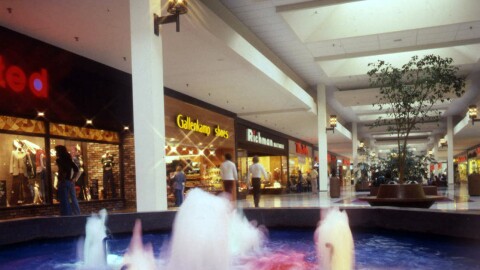From the I-70 westbound ramp from West Broad Street in Columbus drivers can spot an obelisk outside the Ohio Department of Transportation's garage.
The object looks like a little like a small Washington Monument wearing a tin hat.
ODOT Press Secretary Matt Bruning hears a lot of "wild theories" about the Columbus monolith and others around the state.
"I've heard people say, 'Is this something you communicate with the aliens? Is it a missile?'" Bruning said.
The structure is actually part of Ohio’s Real Time Network, which makes GPS more accurate for drivers, ODOT workers and others.
It's a Continuously Operating Reference Station, or CORS for short. ODOT built its first station back in 2004 in Shelby County. Now the agency operates 53 stations, in a network of 66, that includes some CORS in West Virginia, Kentucky, Indiana and Michigan. Pennsylvania also has a system, but doesn’t share its data.

All shapes and sizes
The CORS in Franklinton is currently in a construction zone because ODOT is upgrading the Franklinton garage, test lap and sign shop. That's why it's currently surrounded by an orange snow fence.
A similar CORS station at the Ross County Garage in Chillicothe is easily accessible. It sits on a hill overlooking US 35. It looks a little different than the station in Columbus, but CORS come in all shapes.
“This one, for example, is about a 14-and-a-half foot concrete cylinder that goes all the way down," Bruning said of the Chillicothe station. "It's about three feet in diameter. And we put it 14 and half feet, 15 feet in the ground to make sure it doesn't move.”
Until very recently, the Ross County station had “USA” painted on the side – adding to its missile-like appearance. Now, it’s just white.
Other stations are on pipes or tripods. All have some version of a half-sphere sitting on top. That’s the "workhorse" of a CORS, Bruning said. Every second, that piece communicates with around 40 satellites, some of which are not owned by the United States.
“This is a point on the map that we know is accurate, it's been surveyed and it's not moving, so the GPS satellites can kind of calibrate off of these fixed points around the state," Bruning said.

The data
Anyone can access Ohio’s Real Time Network (RTN) online at ODOT’s website.
ODOT uses the RTN to get precise measurements of locations and elevations for construction projects. The network gets more use outside of ODOT, however. Bruning said about 12,800 people have signed up to access the network's data.

“One of our biggest users, surveyors. Also, farmers will use that to help the accuracy of their GPS systems on their combines and tractors,” Bruning said.
Farmers use the network to improve planting and harvesting and guide GPS-enabled equipment. Bruning thinks that as autonomous vehicle technology improves, self-driving cars will rely on the system, too.
"Scientists also use it to monitor the movement of the crust of the earth since these CORS locations don’t move unless the earth does," Bruning said.
"I've heard people say, 'Is this something you communicate with the aliens? Is it a missile?'"- ODOT Press Secretary Matt Bruning
In the loop
Bruning said while the CORS "monoliths" are visible from some major roads, many people don't notice them. People who do see them often still don't know their purpose.
“Heck, some of our own folks here this morning at the Ross County Garage were even telling me they had no idea what this thing was up here," Bruning said.
Chris Borreson, the transportation manager at the garage, admitted he didn't really understand the CORS.
"I had heard that it’s a GPS tracking device, but I didn’t know what it was used for exactly," Borreson said.
“So, you’ve been educated?” Bruning joked.
“Now I've been educated. Now I'm in the loop," Borreson said.






